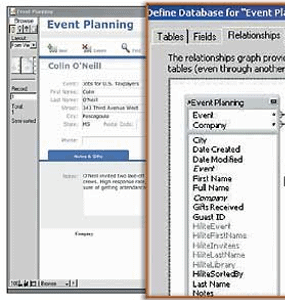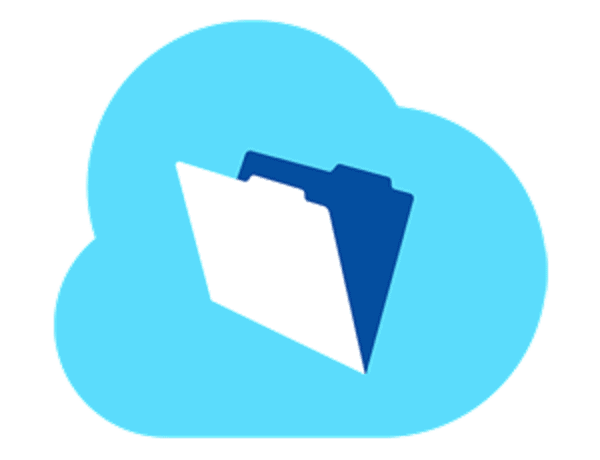Recently, our Central Ohio FileMaker User Group (COFMUG) celebrated 15 years of gathering together to network, learn, grow and develop FileMaker. In honor of the milestone, we looked back at the top 15 advancements in FileMaker from the last 15 years. (You can watch the meeting recording here, but I also wanted to summarize our meetup with a blog post covering the 15 advancements).
So, here’s COFMUG’s chronological list of the top 15 features added to the FileMaker platform over the past 15 years.
Multi-table files & multi-predicate relationships
April 2004, FileMaker 7
FileMaker 7 was a monumental release that changed the course of history for FileMaker development. Before FileMaker 7, which is sometimes referred to as the “dark ages”, data structure required separate files for each table and complex “tricks” to get relationships to work between those files. FileMaker 7 fundamentally changed the way we build FileMaker files and opened the door for even more rapid application development.
Custom functions
April 2004, FileMaker 7
Power to the people—or at least to the developers. The ability to create custom functions or even the ability to chain multiple functions together in a stored manner for processing was a leap forward (and a large gap filled in FileMaker’s functionality). FileMaker 7 again!
Let()
April 2004, FileMaker 7
Paired with custom functions, the Let() statement quickly became one of the most important and flexible functions in the FileMaker calculation engine. It made readable, functional code out of previously jumbled, nested functions; it’s a must have for any FileMaker developer to master.
Cumulative security features
FileMaker 7+
- User accounts
- Grouped privilege sets
- LDAP and AD integration
- SSL Certificates
- Internal and external file encryption
- Server manager groups
…The list goes on as FileMaker has grown its security features to meet modern security demands.
Variables
August 2005, FileMaker 8
It’s hard to imagine FileMaker development without variables, but, before FileMaker 8, they didn’t exist. The idea of storing temporary values without requiring fields was another change made possible through the basic structure overhaul in FileMaker 7.
ESS
July 2007, FileMaker 9
ESS really put FileMaker on the map as a serious app development product. Before ESS, kludgy, frontend systems like Crystal Reports and FoxPro were among the only ways to “easily” put an interface on top of databases like SQL and Oracle. With FileMaker’s easy user interface (UI), search and reporting features, ESS is a match made in heaven for making quick reports and interfaces on top of complex data systems. ESS was also recently expanded to support new DB formats like DB2 and PostgreSQL.
Quickfind
March 2010, FileMaker 11
An underrated but powerful feature is Quickfinds. Essentially, it is a “google-esque” search box that will search multiple fields for a value without needing to construct complex query systems. This addition made training users much faster, as it meets the immediate needs for most basic searching.
FileMaker Go
July 2010, iOS 4, FileMaker 11
FileMaker Go has brought mobile development into the hands of visual-driven developers, removing the need for complex coding to take an idea and make it into an app. With the recent iOS SDK’s, FileMaker’s idea to iPad offering and all of the updates over the years, FileMaker Go has seen significant improvement (and it’s only getting better).
As of August 2017, FileMaker Go has been downloaded over 3 million times from the app store.
Themes
April 2012, FileMaker 12
Good UI design is at the core of any custom app. And, with the introduction of themes, FileMaker took a monumental step forward in rapidly creating beautiful custom software. This fundamental UI change also made it possible to roll out future products, like FileMaker WebDirect, custom themes, and more granular design surface tools.
Insert From URL
April 2012, FileMaker 12
Integrations that were relegated to kludgy “web-scraping” to integrate, became functional and approachable overnight with this new feature. Since rollout, a full-featured set of cURL options have made this the way to consume external APIs in FileMaker.
Modernized Container Fields
April 2012, FileMaker 12
One of the things that FileMaker does very well is adding the ability to store files as record data. The ability to display those file contents in a view in just a few clicks makes it even more powerful. The changes brought in FileMaker 12 made the delivery of file streaming even easier, and it’s grown since then in both security and functional improvements.
Perform Script on Server (PSoS)
December 2013, Filemaker 13
When working on a local network, speed is never really an issue. Yet, as work teams began to grow further apart, the amount of data streaming to remote client computers started to create a bottle neck for good performance in custom apps. With the introduction of PSoS, however, high level performance actions were made available to offload “heavy” data processing actions to streamline performance for remote users.
FileMaker WebDirect
December 2013, FileMaker 13
 While the older IWP and PHP Site Assistant features provided some automated processes to get FileMaker layouts and data to the web, they didn’t come close in terms of look, form and function of FileMaker Pro. With web app markets growing every year, FileMaker made a commitment to keep pace and offered a fully functional thin client that required no web coding experience and retained most of the features of FileMaker Pro. The “create once, deploy anywhere” approach is still one of the largest selling points for FileMaker. Since the release of FileMaker WebDirect, continuous improvements to functionality and performance have been made, including releasing AndroidOS compatibility.
While the older IWP and PHP Site Assistant features provided some automated processes to get FileMaker layouts and data to the web, they didn’t come close in terms of look, form and function of FileMaker Pro. With web app markets growing every year, FileMaker made a commitment to keep pace and offered a fully functional thin client that required no web coding experience and retained most of the features of FileMaker Pro. The “create once, deploy anywhere” approach is still one of the largest selling points for FileMaker. Since the release of FileMaker WebDirect, continuous improvements to functionality and performance have been made, including releasing AndroidOS compatibility.
FileMaker Cloud
September 2016, FileMaker 15
It’s a lean, mean, cloud-hosting machine.
FileMaker cloud has become a fully featured server product, with many of the features enjoyed by the full-fledged FileMaker Server for Mac and Windows, allowing for lower cost Linux cloud instances on Amazon’s EC2 Cloud. Plus, with Apple announcing the deprecation of OSX Server Edition, this came at the right moment as an easy-to-setup product to switch to.
Data API
May 2017, FileMaker 16
Connecting FileMaker has traditionally been accomplished using other data sources inside of FileMaker. Connecting other services to Filemaker, however, has either been relegated to the oldest standard in ODBC/JDBC, or via proprietary APIs in PHP, XML (or even CDML back in the day). The Data API is the first leap toward offering a modern, standardized API method that is generally available across the majority of app development platforms used today. So, not only is FileMaker making development accessible to a large crowd, it now includes fully functional APIs in the drop of a hat, as well—all without the need for writing complex code or setting up complicated server installations.
Looking ahead to FileMaker 17
Be sure to subscribe to our FileMaker Community blog to stay up-to-date on the latest product features, including the release of FileMaker 17 in the coming months.
Did we miss something? Comment below to keep the conversation going!


